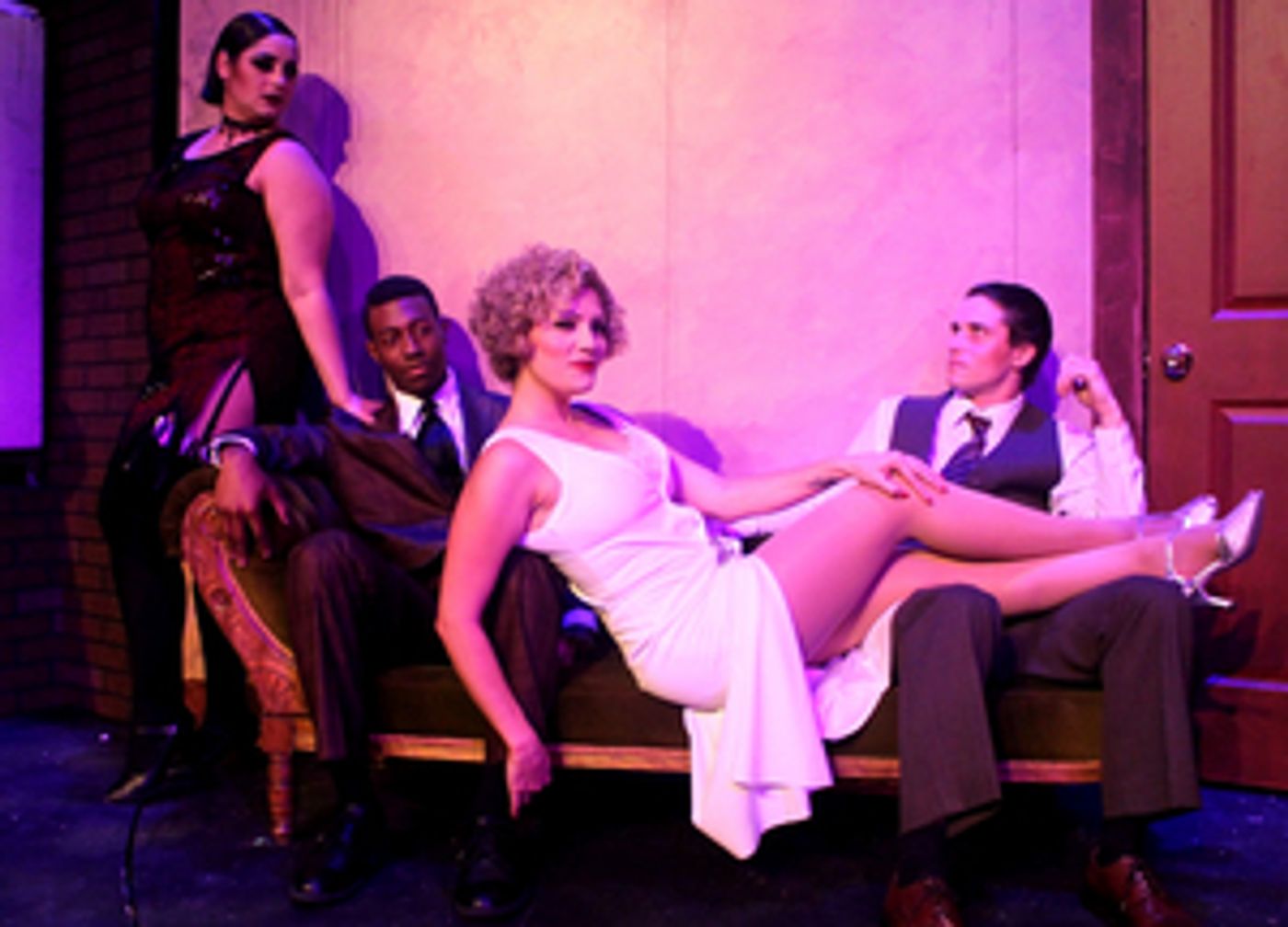Review: THE WILD PARTY at Theatre Baton Rouge
 Gatsby isn't the only person who knows how to throw a killer party. The band is popping, the drinks are flowing, and the guests are lit like cigarettes. Theatre Baton Rouge's production of THE WILD PARTY is a scintillating and sweltering season opener full of lust and angst while driven by an electrifying jazz-rock-influenced score.
Gatsby isn't the only person who knows how to throw a killer party. The band is popping, the drinks are flowing, and the guests are lit like cigarettes. Theatre Baton Rouge's production of THE WILD PARTY is a scintillating and sweltering season opener full of lust and angst while driven by an electrifying jazz-rock-influenced score.
Lily McGill directs this show which Andrew Lippa based on the 1928 narrative poem "The Wild Party" by Joseph Moncure March. The story centers on two vaudeville performers who, in hopes of reigniting their once-sizzling sexual relationship, throw a rowdy shindig that ends in violence. With capital performances by its two female leads, valuable humor contributed by the supporting cast, and high-energy musicality and dancing, the production reaps a more-than-deserved payoff.
The culture of the 'Roaring '20s' as depicted in WILD PARTY is certainly one of a sexual revolution. Characters drink, flirt, and walk the side of danger. There's Queenie (Katelyn Gulotta), the blonde bombshell who craves adventure, and there's her violent lover, a lusty clown named Burrs (Austin Ventura). After a night where Burrs sexually assaults her, Queenie concocts an ill-conceived revenge plot by hosting a party that would put Studio 54 to shame. There's incest, an orgy, betrayal, violence, and cocaine. And not to mention a handsome stranger by the name of Mr. Black (Ren Price) brought to the party by Kate (Marion Bienvenu) a vibrant former prostitute. When Queenie decides to earn Black's affections, it brings out Burrs' savage jealousy. Did I mention this party ends with a - quite literal - bang?
Difficult to categorize and describe, THE WILD PARTY is fraught with "edgy" material in both subject matter and form and might be more accurately described as a musical thrill ride that has the angst of Albee's WHO'S AFRAID OF Virginia Woolf set in the backdrop of CHICAGO. Despite the thrills of the party, the debauchery is at times too at the forefront and masks the real story content as these characters sing about their trysts and desires for two hours, leaving some unresolved plot layers. What the story of THE WILD PARTY lacks in engagement, however, the cast makes up for in energy and talent. Whether it be sexual or comedic, every corner of the stage holds something interesting going on, and the show's main foursome hit with perfection.
From the show's initial moments, Gulotta registers an ice-queen magnetism. She's also quite a talented singer and steals the spotlight at every turn. Bienvenu matches her castmate's forceful presence and vocal prowess while adding touches of sneaky humor, turning Kate into a diverting troublemaker.
Price is compelling as Black, completely convincing as the man besotted with someone else's woman. When he sings "Tell Me Something," he melts the audience. Ventura as the troubling clown Burrs can give the likes of Stanley Kowalski a run for their money. Ventura's role is disturbing in this production and may come as a shock after seeing him so recently as the lead in NEWSIES, but he commits fully to this role that emanates rage, fear, and grief.
The quality use of the ensemble knows no bounds in this production. Watching closely, there is a story being told through each of these characters to show just how wild the titular party can get. Noteworthy supporting turns include Savannah Chiasson's funny portrait of Madelaine True, a lesbian with an aggressively roving eye. Libby Judice-Smith is engagingly ditsy as Mae, the girlfriend of prizefighter Eddie (Scott Mitchell); the pair's song-and-dance number, "Two of a Kind," is delightful.
Choreographer Natalie Baily Smith makes ingenious use of the stage area, devising dance sequences that express the characters' free natures and restlessness. Movements tend to be fast-paced swing-dance routines, but are slow and seductive when needed. The impressive solo routines of Tony Collins deserve a nod.
If the plotline sounds somewhat lackluster, the great "Jazz Age" score will keep your ears and feet interested. Many of the song numbers like "Out of the Blue," "Life of the Party," "Let Me Drown," "How Did We Come to This?" and the well-practiced, four-part harmony of "Poor Child" are very challenging and have the feel of a musical opera, not unlike SWEENEY TODD.
No doubt, this is not your grandmother's musical, and certainly not for children. But if you're someone who loves a good party, with all its inherent drama, longing, and temptation, the talent currently sharing the stage in TBR makes this party one you don't want to miss.
Reader Reviews

Videos

